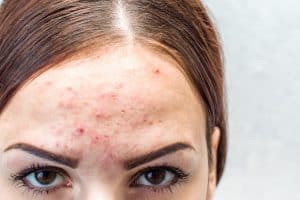It may not be a common occurrence but at times people do complain about wanting to itch their skin off. When hearing of such urges to continuously itch, the immediate response would be to check for insect bites or any such triggers which may be causing it. However, having chronic itching is an actual skin condition and it is known as Pruritus.
What is Pruritus?
Pruritus is the medical term given to chronically itchy skin. This causes an uncomfortable and often irritating sensation that continuously spurs on the urge to scratch at the skin (1). It is usually caused by dry skin, and more often than not, pruritus itself is a symptom for a variety of conditions.
The way you skin appears during this skin condition highly depends on what initially triggers the itch. This condition is more common in elders and middle-aged people, mainly because the skin is known to become drier as you age.
There are glands on the skin known as sebaceous glands, which are responsible for producing an oily substance known as sebum (2). Sebum is what gives skin its characteristic sheen and when healthy, it provides the skin with a glow. However, as we age, this production of sebum reduces, and skin tends to undergo elastosis, wherein the skin loses its elasticity and supple look (3). This is one of the major reasons why pruritus in older people tends to result in reddening, irritation and even bleeding.
The form of itching may vary from person to person and exhibit itself in different ways based on the condition causing it. It may start all over the body, or sometimes target small and specific regions.
The severity of the condition and the duration for which it lasts can help decide if a doctor needs to be consulted about the condition. In case of extreme redness, bumps and dry skin, lasting for longer than two weeks are indicators that a professional consultation is in order. The above stated are the usual symptoms which hint at pruritus.
Doctors always request patients to resist the urge to itch or scratch, since this inevitably leads to breaks and cracks in the skin. This is an invitation for harmful pathogens and bacteria to infect the wound. This can then lead to disastrous consequences if left unaddressed. Keeping track of your patterns of itching and the reaction of your skin to it can sometimes help in determining the underlying cause of the itch.
The best care for such a skin condition is to always begin with better self-care, particularly in the form of moisturizing the skin and keeping dryness at bay. Although, when they are symptoms of further hidden internal conditions like anemia or kidney or liver failure, or thyroid issues, the itchy skin is more long drawn and lasting (4).
Nerve damage and nerve disorders can also sometimes cause itchy skin that does not give up, and these are just a few of the instances where you must visit a doctor at the earliest. Along with this, pregnant women can also complain of this condition, since hormonal changes during the period can cause random changes to the skin’s health, and so trigger pruritus.
What is Brachioradial Pruritus?
Brachioradial pruritus is a more advanced form of this condition, which is termed to be a neurogenic itch syndrome (5). This tends to target the upper parts of the body and mainly over the arms, shoulder and the brachioradialis muscle. As it is with normal pruritus, scratching at the itch only worsens the itch and the skin’s condition.
The easiest ways to treat this would be to soothe the skin with ice packs and for long lasting relief, it depends on what doctors suggest as forms of skin therapy. Only medical help can provide any long-term relief from such a condition.
What is Pruritus of the scalp?
Commonly known as scalp pruritus, this form of the itchy scalp can be one of the toughest forms of pruritus to treat. The scalp is generally a part of our skin with more complex neural structures and dense hair follicle regions. So itching in this region is tough to control and diagnosis takes a considerable amount of time.
This is known to distress patients who suffer from the condition because it usually accompanies far more serious skin conditions like psoriasis or even seborrheic dermatitis (6). Both of these are known to be chronic and repeating skin conditions. This is treated by addressing the root causes, which are the actual skin conditions causing the pruritus and this usually means medication as well as dermatologist consultations.
Struggling with a Skin or Hair issue? Download the CureSkin App now by clicking here to get the best treatment. It’s easy, fast and affordable!





